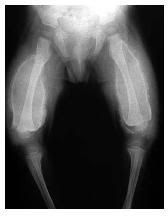
Scurvy leads to the formation of liver spots on the skin, spongy gums, and bleeding from all mucous membranes. The spots are most abundant on the thighs and legs, and a person with the ailment looks pale, feels depressed, and is partially immobilized. In advanced scurvy there are open, suppurating wounds and loss of teeth.

Scurvy was at one time common among sailors, pirates and others who were on ships that were out to sea longer than perishable fruits and vegetables could be stored and by soldiers who were similarly separated from these foods for extended periods. It was described by Hippocrates (c. 460 BC–c. 380 BC). Its cause and cure has been known in many native cultures since prehistory.
For example, in 1536, the French explorer Jacques Cartier, exploring the St. Lawrence River, used the local natives' knowledge to save his men who were dying of scurvy. He boiled the needles of the arbor vitae tree (Eastern White Cedar) to make a tea that was later shown to contain 50 mg of vitamin C per 100 grams. However it was a Scottish surgeon in the British Royal Navy, James Lind (1716–1794) who first proved it could be treated with citrus fruit in experiments he described in his 1753 book, A Treatise of the Scurvy.
In infants, scurvy is sometimes referred to as Barlow's disease, named after Sir Thomas Barlow (1845–1945), a British physician who described it. Barlow's disease is different from Barlow's syndrome.
Scurvy in infants

Scurvy can be prevented by a diet that includes citrus fruits such as limes, oranges, or lemons. Other good sources of Vitamin C are fruits such as guava, papaya, tomatoes or strawberries. It can also be found in some vegetables, such as bell peppers, broccoli, potatoes, cabbage, spinach, paprika, and even pickles. Though redundant in the face of a balanced diet, various nutritional supplements are available that provide ascorbic acid well in excess of that required to prevent scurvy, and even some candies contain vitamin C.
No comments:
Post a Comment